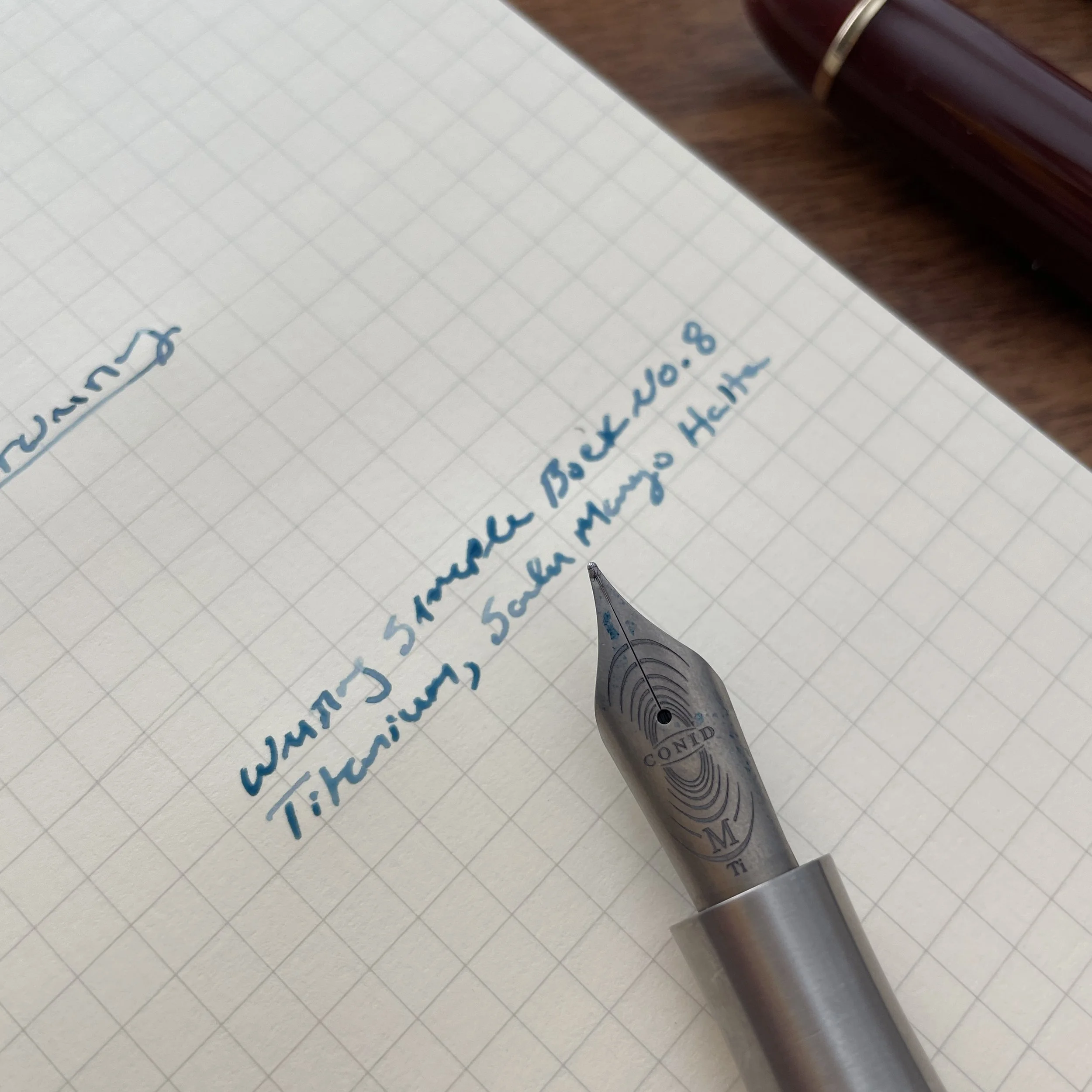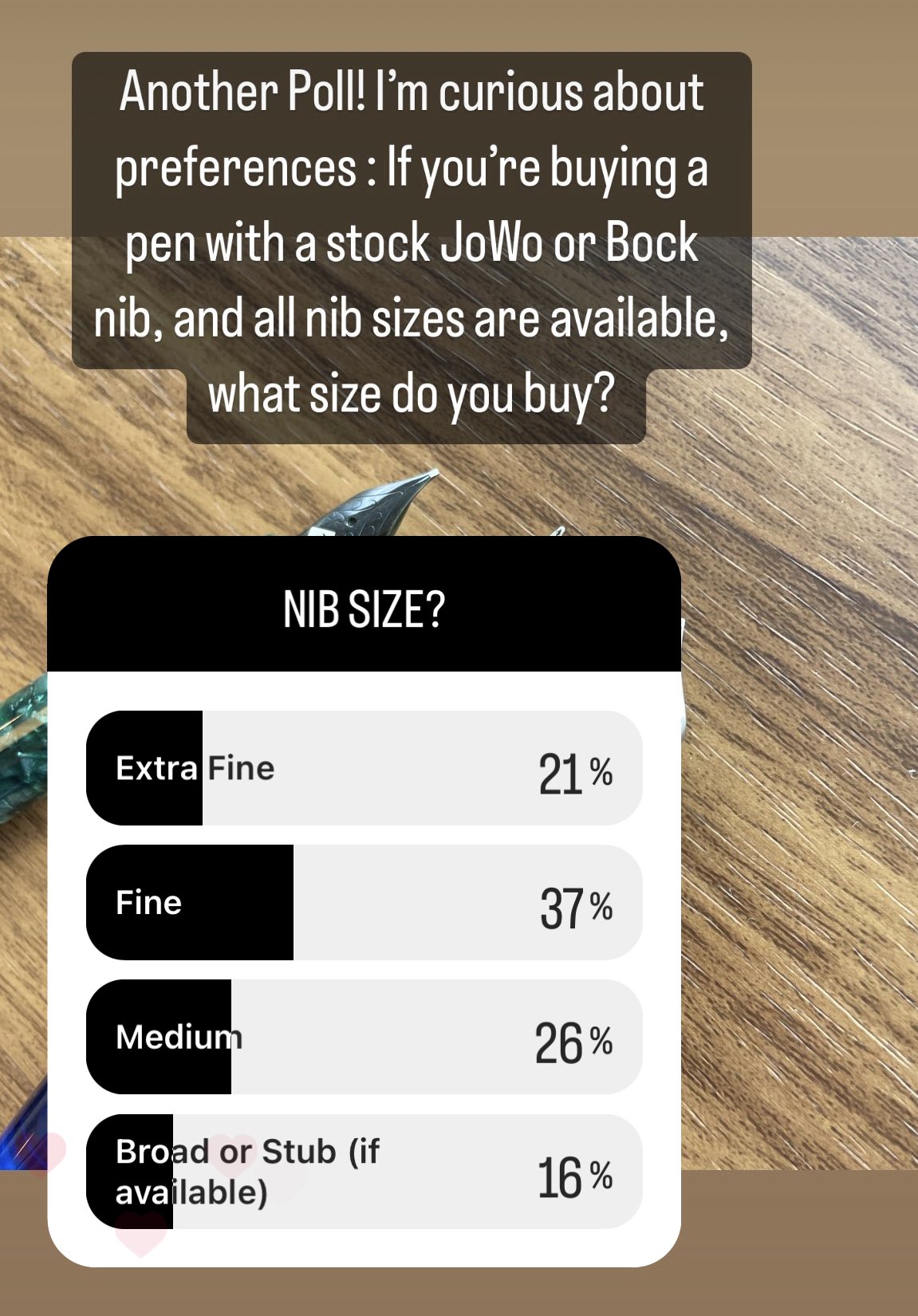So we’re back with another Q&A session, this time focusing on two particularly “urgent” questions. Here, I would say that they’re “urgent” in the sense that I’m seeing these same questions (or some slight variation on them) come up repeatedly, which to me indicates that manufacturers, retailers, and other pen industry stakeholders aren’t doing a good enough job of educating newcomers to the fountain pen space. To that end, I’m going to keep publishing these posts and consolidating/organizing them in the “Ask TGS” space for future reference.
Question 1: Why Does My TWSBI Vac700 Or Nahvalur Original Plus or Pilot Custom 823 Only Write for a Half a Page and Then “Dry Up”?
I’ve received this question from three different people in the past month, all of whom purchased one of these vacuum-filler fountain pens without realizing how the vacuum-filling system worked. All of these pens feature a “shut off valve”, which is basically a stopper that seals the ink in the barrel, cutting it off from the nib and feed, when the blind cap is screwed all the way down. On the one hand, this is great for travel, because it means that you can typically bring these pens on an airplane without having to worry about ink leaking into the cap due to changes in temperature or air pressure. On the other hand, in order to write for more than a half-page or so, you will need to open the valve by unscrewing the blind cap one or two turns to allow the ink to flow consistently. It’s a feature of this filling system, not a design flaw, and is quite likely the best way to travel with a fountain pen if your goal is to absolutely minimize the possibility of leakage. See the photo below for an illustration of what I’m talking about.
Here, I’ve opened the blind cap on my Pilot Custom 823 as I would for a longer writing session.
Question 2: My Aurora 14K Fine Nib Writes Wider Than The JoWo Stainless Steel Medium on My diplomat. Is The aurora Nib Defective?
I’ll start by answering this question as directly as I can: No, not necessarily. However, this response needs a lot of context.
Those new to fountain pens often don’t realize that nib sizes are not uniform across brands, and many factors can determine how wide a line any specific nib will leave on the page. For example, a fine nib from a Japanese brand will generally write a much narrower line than a fine nib made by a German company like JoWo or Bock. While regional variations in average handwriting size and general preferences for finer lines in certain countries explains some of the variation between manufacturers, it’s not the entire story, and there are several things to keep in mind when setting expectations:
As a general matter, there is little uniformity in the fountain pen world. Fountain pens are inherently imprecise instruments. While ballpoints, gel pens, and rollerballs have less variability with their well-known .5mm, .7mm, and 1.0mm tip sizes, there is no standard for what constitutes an “extra-fine,” “fine,” “medium,” or “broad” fountain pen nib. For those brands that make their nibs in-house with a lot of hand-finishing (like the Aurora referenced above), there may even be variability between individual nibs that are technically the same size.
Gold nibs generally write a wetter, wider line than steel nibs of an equivalent size. While not always the case, this is a reasonable expectation. Gold nibs are typically “softer” than steel nibs, meaning the tines have more give and they will accordingly release more ink on the page. On average, the gold medium nibs in my collection write a wider line than their steel counterparts.
A fountain pen with an ebonite (hard rubber) feed will generally have heavier ink flow, and hence, write a wider line, than a pen with a plastic feed. This is why makers often pair flex nibs with an ebonite feed, because the ebonite feed ensures that the ink flow keeps up with the nib. Softer gold nibs paired with ebonite feeds can be extremely wet writers, to the point where I personally default to the “extra-fine” nibs in certain brands like Scribo.
Piston Fillers, Vacuum Fillers, and Eyedroppers generally write a wetter line than cartridge-converter pens. Again, this is a generalization, but I’ve always found that pens with a larger volume of ink in direct contact with the back of the feed are by default wetter writers, which can affect line width.
Your choice of ink and/or paper will affect how a nib performs. Certain inks are wetter than others, and can spread more on the paper. If you have a pen that you feel consistently writes too wide a line, you can try to switch the ink up to something drier, like an iron gall ink and many blue-blacks. Relatedly, non-coated papers that are more absorbent will show a wider line because the ink has a tendency to spread as it soaks into the paper fibers.
To illustrate how these factors combine to affect how a specific pen behaves, consider the question about the Aurora pen above. While a 14k gold Aurora fine nib is on the stiffer side for a gold nib, paired with an ebonite feed in a piston filler, it would not surprise me to have the pen write a similar line to a stainless steel medium JoWo nib (and maybe even wider with a particularly wet ink). To illustrate, here’s a writing sample from my own 14k Aurora Sigaro Blu compared against a writing sample from a stainless steel Kaweco Sport.
There’s not much difference here. The particular Kaweco nib I chose was the wettest one that I could find in my collection, and even then it’s only slightly wider than what I would consider to be a moderately dry Aurora 88 fine nib, which is a 14k nib on a piston filler with an ebonite feed.
So what’s an aspiring fountain pen user to do here? Experiment. That’s part of the fun with fountain pens, and to the extent you can, get to a pen club/pen store/pen show and try as many different pens as possible to get a feel for how different nibs write. While comparing writing samples online can be helpful, and give you a general “ballpark” idea of how a nib will behave, it is at best an approximation because that writing sample is limited to a single combination of pen, ink, and paper that was used to write the sample. Over time, most fountain pen enthusiasts develop preferences for certain brands based on experience and how certain nibs work with our handwriting. Many of us take our pens to a nib grinder to have them tweak the nibs even further to modify ink flow and to shape tipping in order to get the line variation that we want. That’s the great thing about fountain pens - they are infinitely customizable, and you can tweak many different variables to get exactly the writing experience you desire.
We’re open this weekend in-store! Come see us from 9-6pm on Saturday and 1-5pm on Sunday. We have plenty of pens inked up for you to test, so you can see exactly what I’m talking about above.


